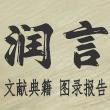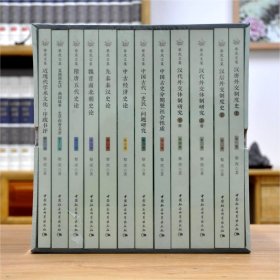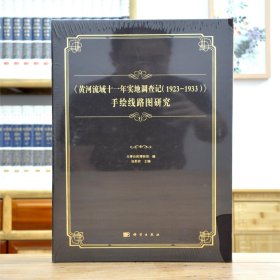
随州擂鼓墩二号墓(16开精装 全1册)
这本报告的特点是资料全面、完整、翔实、准确,图版清晰,且彩版较多,作者除对此墓本身的年代、墓主身份、文化特征等进行了较充分的论述外,还与同时代一些身份相当的墓葬进行了对比研究。因此,这是一本研究东周时期上层贵族墓的葬制、礼制和特征的重要参考资料,不仅值得历史学界、考古学界参阅收藏,也值得音乐界、冶铸界等参阅收藏。
¥ 166.6 5.2折 ¥ 320 全新
仅1件
北京通州
认证卖家担保交易快速发货售后保障
作者随州石出人博物馆(随州市博物馆) 编
出版社文物出版社
出版时间2008-10
版次1
装帧精装
货号31
上书时间2023-06-21
- 店主推荐
- 最新上架
商品详情
- 品相描述:全新
- 商品描述
- 编辑推荐:这本报告的特点是资料全面、完整、翔实、准确,图版清晰,且彩版较多,作者除对此墓本身的年代、墓主身份、文化特征等进行了较充分的论述外,还与同时代一些身份相当的墓葬进行了对比研究。因此,这是一本研究东周时期上层贵族墓的葬制、礼制和特征的重要参考资料,不仅值得历史学界、考古学界参阅收藏,也值得音乐界、冶铸界等参阅收藏。内容提要:The Tomb No.2 at Leigudun in Suizhou(Abstract) The tomb No. 2 at Leigudun (on a mound in Zengdudistrict, 2 kilomete northwest to the city proper of Suizhou) isthe second largest tomb after the well-known tomb of the Marquiseof Zeng, i.e., the tomb No.1 at Leigudun. Both of the tombs arelocated in Suizhou and belong to the membe of the ruling lineage ofthe Zeng polity. It is believed by archaeologists that the twotombs are of equal significance in providing important evidence forundetanding of the Sui culture, ritual practices and musicalperformances in the pre-Qin times, and the relatiohips between theSui and Chu polities. The present volume reports the discovery andexcavation of the tomb No.2 at Leigudun. It includes 449 burialgoods of various kinds, and 32 are unearthed from a disturbingditch. Date of the tomb and the social status of the occupant areboth given in detail in the textual sectio. Though the tomb No.2was actually excavated very early, the site report only comes outas late as 2008 for many reaso. We would particularly like to thankthe people who worked very hard in the past several decades keepingand coerving the materials for their publication. The report hasfour chapte. Chapter I Introduction The fit section introduces thegeographic location of Suizhou, environmental and political changessince the late Western Zhou dynasty. Section one also includes thesituation of the cemetery where the tomb No. 2 is located,coervation and recotruction of the finds, and material preparationfor publication. Suizhou is located in the so-called Sui-Zao'corridor', a narrow joint area of the south and north parts ofChina, with beautiful landscapes, comfortable climate conditio andfertile soil for agricultural use and deely veined with rive; forall the above mentioned geographic and natural conditio, the cityhas always been perceived since the antiquity as an ideal andimportant location for human living and cultural communicationbetween the south and the north of China. The Sui polity wasestablished in the late Western Zhou period. During the earlySpring and Autumn period, it moved its capital to the Sui-Zaocorridor area and subsequently became a powerful polity on the eastbank of the Hahui River. Chapter II Tombs and the Major OccupantData of the tomb No.2 includes four aspects: burial mound, burialpit, furnishings, and treatments of the dead. 1. There was indeed amound right above the burial chamber of the tomb No.2 at Leigudun,which was totally leveled to the ground by the local military forcewhen building a camp; 2. The second part introduces the location,orientation, size, structure, and the fill of the burial pit; 3.The third part introduces the major coffin and subordinate coffi;the coffin of the tomb occupant is located in the middle of thenorthern part of the burial chamber, seriously deteriorated; coffinaccessories are scattered around; remai of another coffin, probablya subordinate coffin to the major coffin, was discov-ered in thesouthwestern comer of the chamber, with no burial goods iide; 4.The skeletal data is quite limited since the bones are highlydeteriorated; what we can know from the bones left is that themajor occupant was headed to the east, while the sacrificed victimin the accompanying coffin was buried in a north-south orientation.Chapter III Burial Goods Very abundant burial goods (in total, 449single objects) have been recovered from the tomb No.2,includingbronzes, stone and jade objects, pottery vessels, horn and glassobjects, shell ornaments, and lead and tin vessels. According tofunction, they can be classified into mainly six categories, i.e.,ritual vessels,musical itruments, life tools, hoe and chariotfittings, adornments, and burial goods. (1) Bronzes Ritual vesselsinclude: 17 ding (meat-stewing tripod), 8 gui (grain-offeringvessel), 4fu (round vessel with flat bowl on high openwork foot),10 li (tripodal cooking vessel with pouch-shaped feet), 1 yan(grain steamer), 4 zun (liquid-serving vessel), 2 washing pots, 4pots, 3 dou (stem bowl), 1 fu (vessel with globular bottom, made tofit a stovetop), 1 dish, 1 yi (pouring vessel), 3 bi (pointedspoon), and 1 dou (ladle with cylindrical container); Musicalitruments include: 36 yongzhong bells, 1 drum stand, 22 hooks forhanging the bells; Life tools include: 1 fire-pan, 1 dustpan, 1lid, 1 hook- shaped implement, and 1 funnel; Hoe and chariotfittings and ornaments include: 4 canopy mounts, 5 axle-endornaments, 6 hoe bits,16 reign controlle, 102 bridle ornaments, 11bicha, 36 bird-shaped and 18 plank-shaped adornments. (2) Jade andstone burial goods Ritual objects include: 1 bi (ring-shaped disc),and 1 gui (pentagonal tablet); Musical itruments include: 12chimestones; Ornaments include: 2 arc-shaped pendants, and 8 agaterings; (3) Ceramic vessels: 7 dou (4) Lead and tin objects include64 fish-shaped ornaments, and 15 coffin accessories; (5) Othersignificant finds include 7 horn gig-bits, a pair of deer antle, 3crystal beads, 1 string of ring-shaped beads, and 1 shell ornament.The tomb was most likely to have been looted in antiquity, which iscorroborated by the co-occurrence of the disturbing ditch near thecoffin of the major occupant and the large amount of burial goodsseemingly left by the loote within the ditch by churning the tombsoil. It is for this reason, we deliberately separate these findsfrom those unearthed from within the tomb chamber. The 32 findsfrom the ditch include 1 pottery dou, 1 stone bi, 1 jade ramfigurine, 1 jade rabbit figurine,1 jade plug, 20 glass beads, 5perforated turquoise beads, and 1 spade-shaped iron object. Allthese finds are introduced in a typological order. One sample isselectively given when many typologically identical vessels arefound. Chapter IV Conclusio The last section of this reportincludes the following research results: (1) Date of the tomb No.2at Leigudun: late phase of the early Warring States period throughthe early phase of the middle Warring States period; (2) Identityof the major tomb occupant: another Marquise of the Zeng polityafter the famous Marquise Yi; (3) Though the finds reflect aserious influence from the Chu culture, the major elements of themortuary practice belong to the Zeng cultural sphere.
图书标准信息
- 作者 随州石出人博物馆(随州市博物馆) 编
- 出版社 文物出版社
- 出版时间 2008-10
- 版次 1
- ISBN 9787501024926
- 定价 320.00元
- 装帧 精装
- 开本 16开
- 纸张 胶版纸
- 页数 248页
- 正文语种 英语
- 【内容简介】
-
TheTombNo.2atLeiguduninSuizhou(Abstract)ThetombNo.2atLeigudun(onamoundinZengdudistrict,2kilometersnorthwesttothecityproperofSuizhou)isthesecondlargesttombafterthewell-knowntomboftheMarquiseofZeng,i.e.,thetombNo.1atLeigudun.BothofthetombsarelocatedinSuizhouandbelongtothemembersoftherulinglineageoftheZengpolity.ItisbelievedbyarchaeologiststhatthetwotombsareofequalsignificanceinprovidingimportantevidenceforunderstandingoftheSuiculture,ritualpracticesandmusicalperformancesinthepre-Qintimes,andtherelationshipsbetweentheSuiandChupolities.ThepresentvolumereportsthediscoveryandexcavationofthetombNo.2atLeigudun.Itincludes449burialgoodsofvariouskinds,and32areunearthedfromadisturbingditch.Dateofthetombandthesocialstatusoftheoccupantarebothgivenindetailinthetextualsections.ThoughthetombNo.2wasactuallyexcavatedveryearly,thesitereportonlycomesoutaslateas2008formanyreasons.Wewouldparticularlyliketothankthepeoplewhoworkedveryhardinthepastseveraldecadeskeepingandconservingthematerialsfortheirpublication.
Thereporthasfourchapters.
ChapterIIntroduction
ThefirstsectionintroducesthegeographiclocationofSuizhou,environmentalandpoliticalchangessincethelateWesternZhoudynasty.SectiononealsoincludesthesituationofthecemeterywherethetombNo.2islocated,conservationandreconstructionofthefinds,andmaterialpreparationforpublication.
Suizhouislocatedintheso-calledSui-Zaocorridor,anarrowjointareaofthesouthandnorthpartsofChina,withbeautifullandscapes,comfortableclimateconditionsandfertilesoilforagriculturaluseanddenselyveinedwithrivers;foralltheabovementionedgeographicandnaturalconditions,thecityhasalwaysbeenperceivedsincetheantiquityasanidealandimportantlocationforhumanlivingandculturalcommunicationbetweenthesouthandthenorthofChina.TheSuipolitywasestablishedinthelateWesternZhouperiod.DuringtheearlySpringandAutumnperiod,itmoveditscapitaltotheSui-ZaocorridorareaandsubsequentlybecameapowerfulpolityontheeastbankoftheHanshuiRiver.
ChapterIITombsandtheMajorOccupant
DataofthetombNo.2includesfouraspects:burialmound,burialpit,furnishings,andtreatmentsofthedead.
1.TherewasindeedamoundrightabovetheburialchamberofthetombNo.2atLeigudun,whichwastotallyleveledtothegroundbythelocalmilitaryforcewhenbuildingacamp;
2.Thesecondpartintroducesthelocation,orientation,size,structure,andthefilloftheburialpit;
3.Thethirdpartintroducesthemajorcoffinandsubordinatecoffins;thecoffinofthetomboccupantislocatedinthemiddleofthenorthernpartoftheburialchamber,seriouslydeteriorated;coffinaccessoriesarescatteredaround;remainsofanothercoffin,probablyasubordinatecoffintothemajorcoffin,wasdiscov-eredinthesouthwesterncomerofthechamber,withnoburialgoodsinside;
4.Theskeletaldataisquitelimitedsincethebonesarehighlydeteriorated;whatwecanknowfromthebonesleftisthatthemajoroccupantwasheadedtotheeast,whilethesacrificedvictimintheaccompanyingcoffinwasburiedinanorth-southorientation.
ChapterIIIBurialGoods
Veryabundantburialgoods(intotal,449singleobjects)havebeenrecoveredfromthetombNo.2,includingbronzes,stoneandjadeobjects,potteryvessels,hornandglassobjects,shellornaments,andleadandtinvessels.Accordingtofunction,theycanbeclassifiedintomainlysixcategories,i.e.,ritualvessels,musicalinstruments,lifetools,horseandchariotfittings,adornments,andburialgoods.
(1)Bronzes
Ritualvesselsinclude:17ding(meat-stewingtripod),8gui(grain-offeringvessel),4fu(roundvesselwithflatbowlonhighopenworkfoot),10li(tripodalcookingvesselwithpouch-shapedfeet),1yan(grainsteamer),4zun(liquid-servingvessel),2washingpots,4pots,3dou(stembowl),1fu(vesselwithglobularbottom,madetofitastovetop),1dish,1yi(pouringvessel),3bi(pointedspoon),and1dou(ladlewithcylindricalcontainer);
Musicalinstrumentsinclude:36yongzhongbells,1drumstand,22hooksforhangingthebells;
Lifetoolsinclude:1fire-pan,1dustpan,1lid,1hook-shapedimplement,and1funnel;
Horseandchariotfittingsandornamentsinclude:4canopymounts,5axle-endornaments,6horsebits,16reigncontrollers,102bridleornaments,11bicha,36bird-shapedand18plank-shapedadornments.
(2)Jadeandstoneburialgoods
Ritualobjectsinclude:1bi(ring-shapeddisc),and1gui(pentagonaltablet);
Musicalinstrumentsinclude:12chimestones;
Ornamentsinclude:2arc-shapedpendants,and8agaterings;
(3)Ceramicvessels:7dou
(4)Leadandtinobjectsinclude64fish-shapedornaments,and15coffinaccessories;
(5)Othersignificantfindsinclude7horngig-bits,apairofdeerantlers,3crystalbeads,1stringofring-shapedbeads,and1shellornament.
Thetombwasmostlikelytohavebeenlootedinantiquity,whichiscorroboratedbytheco-occurrenceofthedisturbingditchnearthecoffinofthemajoroccupantandthelargeamountofburialgoodsseeminglyleftbythelooterswithintheditchbychurningthetombsoil.Itisforthisreason,wedeliberatelyseparatethesefindsfromthoseunearthedfromwithinthetombchamber.
The32findsfromtheditchinclude1potterydou,1stonebi,1jaderamfigurine,1jaderabbitfigurine,1jadeplug,20glassbeads,5perforatedturquoisebeads,and1spade-shapedironobject.
Allthesefindsareintroducedinatypologicalorder.Onesampleisselectivelygivenwhenmanytypologicallyidenticalvesselsarefound.
ChapterIVConclusions
Thelastsectionofthisreportincludesthefollowingresearchresults:
(1)DateofthetombNo.2atLeigudun:latephaseoftheearlyWarringStatesperiodthroughtheearlyphaseofthemiddleWarringStatesperiod;
(2)Identityofthemajortomboccupant:anotherMarquiseoftheZengpolityafterthefamousMarquiseYi;
(3)ThoughthefindsreflectaseriousinfluencefromtheChuculture,themajorelementsofthemortuarypracticebelongtotheZengculturalsphere. - 【目录】
-
序
壹前言
一地理位置与环境
二历史沿革与传说
三墓葬的发现与发掘
四资料整理与报告编写
贰墓葬形制
一圭寸土
二墓坑
三葬具
1.木椁
2.主棺
3.陪葬棺
四葬式
叁随葬遗物
一青铜器
(一)礼器
1.鼎
2.簋
3.簋
4.鬲
5.
6.尊缶
7.盥缶
8.壶
9.豆
10.釜
11.盘
12.匝
13.匕
14.斗
(二)乐器
1.甬钟
2.建鼓座
3.甬钟挂钩
(三)生活用器
1.炭盆
2.箕
3.器盖
4.钩形器
5.漏斗
(四)车马器
1.车盖立叉
2.车軎
3.衔
4.节约
5.马络饰
6.壁插
(五)饰件
1.鸟形饰件
2.板形饰件
二玉、石器
(一)礼器
1.石璧
2.石圭
(二)乐器
石磬
(三)饰件
1.玉璜
2.玛瑙环
三陶器
陶豆
四角器
1.镳
2.鹿角
五料器
1.紫色水晶珠
2.环形串珠
六蚌器
蚌饰
七铅锡器
1.鱼形饰件
2.棺构件
八扰乱沟遗物
1.陶豆
2.石璧
3.玉羊
4.玉兔
5.玉塞
6.料珠
7.绿松石穿孔珠
8.铁铲形器
肆结语
一年代
二墓主
三文化特征分析
四主要收获
附表
附表一二号墓随葬遗物登记表
附表二二号墓出土青铜器分类统计表
附表三二号墓青铜器内动物骨登记表
附录
附录一随州擂鼓墩二号墓编钟音乐性能分析
附录二随州擂鼓墩二号墓出土部分玉石器鉴定结果
附录三随州擂鼓墩二号墓出土料器成分、物相分析
附录四随州擂鼓墩二号墓出土部分青铜器焊料成分分析
附录五随州擂鼓墩二号墓出土青铜器残留泥芯检测报告
附录六随州擂鼓墩二号墓青铜器内动物骨的C、N稳定同位素分析
附录七随州擂鼓墩二号墓出土青铜器的金相实验研究
附录八随州擂鼓墩二号墓青铜器群的铸制工艺研究
后记
英文提要
点击展开
点击收起
— 没有更多了 —






















以下为对购买帮助不大的评价